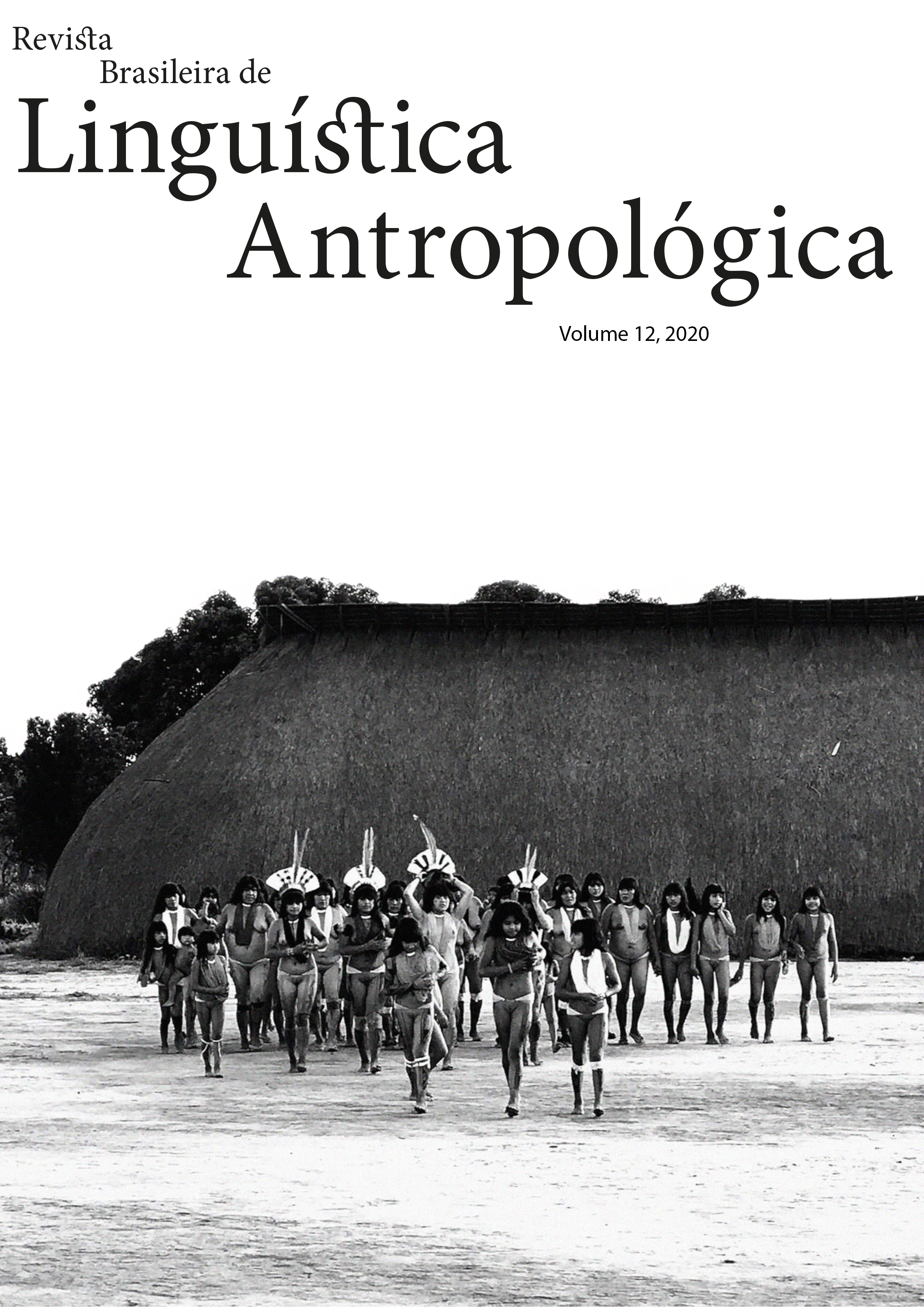Locativos no verbales en Mazahua (otomangue)
DOI:
https://doi.org/10.26512/rbla.v12i1.30593Keywords:
adjunto, frase, preposición, verbo direccionalAbstract
The aim of this dissertation is focused on the description and explanation of the different grammatical mechanisms that the language has to express the non-verbal location. The importance lies in explaining that the Mazahua has morphological, lexical and syntactic resources to exhibit the locative senses. Mazahua like many other Oto-Mangean languages has a very productive locative verb construction. Dispositional, positional, locative, stative verbs are lexically determined. No verbal location is expressed in free and bound morphemes; lexical forms, noun and prepositional phrases. Also the direction of motion is denoted in verb. Location forms are peripheral adjuncts and do not count as part of the syntactic valence of verb. All these forms can appear in sentence.
References
Ameka, Felix, y Levinson Stephen. 2007. Introduction- The typology and semantics of locative predicates: posturals, positionals and other beasts. Linguistics 45, 847-871.
Bohnemeyer, Jurgen y Penelope Brown. 2007. Standing divided: dispositionals and locative predication in two Mayan languages. Linguistics 45, 1105-1151.
Dryer, Matheus y Martín Haspelmath. (eds.). 2013. The World Atlas of Language Structures Online. Leipzig: Max Planck Institute for Evolutionary Anthropology.
García Zúñiga, Antonio; Nathalia Hernández Hernández; Alejandra Ortiz Villegas y Armando Mora-Bustos. 2019. Adposiciones y sistemas mixtos en tres lenguas otomangues. Comunicación presentada en el Seminario de diacronía y adposiciones: origen y evolución’. Universidad de Sonora. Hermosillo. 14-15 de noviembre.
Guerrero, Lilian (ed.). 2019. Adposiciones y elementos de su tipo en lenguas de América. México: Universidad Nacional Autónoma de México.
Guillaume, Antoine. 2017. Sistemas complejos de movimiento asociado en las lenguas Takana y Pano: perspectivas descriptiva, tipológica e histórico-comparativa. Amerindia 39, 211-261.
Hagé€ge, Claude. 2010. Adpositions. Oxford: Oxford University Press.
Hemphill Chisty y Aoron Hemphill. 2019. Funciones adposicionales y palabras múltiples categorías en me’phaa. En Lilian Guerrero (ed.). Adposiciones y elementos de su tipo en lenguas de América. México: Universidad Nacional Autónoma de México. 277-314.
Hernández Chincoya, Francisco y Armando Mora-Bustos. 2019. Adverbios por posposiciones en chichimeco. Comunicación presentada en el Seminario de diacronía y adposiciones: origen y evolución’. Universidad de Sonora. Hermosillo. 14-15 de noviembre.
Knapp, Michael. 2008. Fonología segmental y léxica del mazahua. México: Instituto Nacional de Antropología e Historia.
Levinson, Stephen. 2003. Space in Language and Cognition. Explorations in Cognitive Diversity. Cambridge: Cambridge University Press.
Levinson, Stephen, y David P. Wilkins. 2006. The background to the study of the lenguage of space. En Stephen Levinson y David P. Wilkins (eds.). Grammars of space, Cambridge: Cambridge University Press, 1-23.
Lillehaugen, Brook Danielle.99 2006. Expressing location in Tlacolula Valley Zapotec. Tesis de doctorado. University of California. Los Angeles.
Lizárraga Navarro, Glenda y Armando Mora-Bustos. 2015. Gramática de los adjuntos. Estudios de Lingüística Aplicada, 33, 225-251.
Mora-Bustos, Armando y Mora Muñoz, Gabriela. 2018. La estructura de la frase nominal en mazahua. Estudios de lingüística aplicada. 36, 131-174.
Stewart, Donald. 1966. Gramática del mazahua. Correcciones y comentarios de Doris Bartholomew (Manuscrito). México: Instituto Lingüístico de Verano.
Van Valin, Robert, Jr y Randy LaPolla. 1997. Syntax: structure, meaning and function. Cambridge: Cambridge University Press.
Downloads
Published
Issue
Section
License
Copyright (c) 2020 Revista Brasileira de Linguística Antropológica

This work is licensed under a Creative Commons Attribution 4.0 International License.
Authors who publish in RBLA agree to the following terms:
a) Authors maintain the copyright and grant the journal the right of first publication, and the work is simultaneously licensed under the Creative Commons Attribution License, which allows the sharing of the work with recognition of the authorship of the work and initial publication in this journal.
b) Authors are authorized to assume additional contracts separately, for non-exclusive distribution of the version of the work published in this journal (eg, publish in an institutional repository or as a book chapter), with recognition of authorship and initial publication in this journal.
c) Authors are allowed and encouraged to publish their work online (eg, in institutional repositories or on their personal page) at any point before or during the editorial process, as this can generate productive changes, as well as increase impact and citation of the published work.










